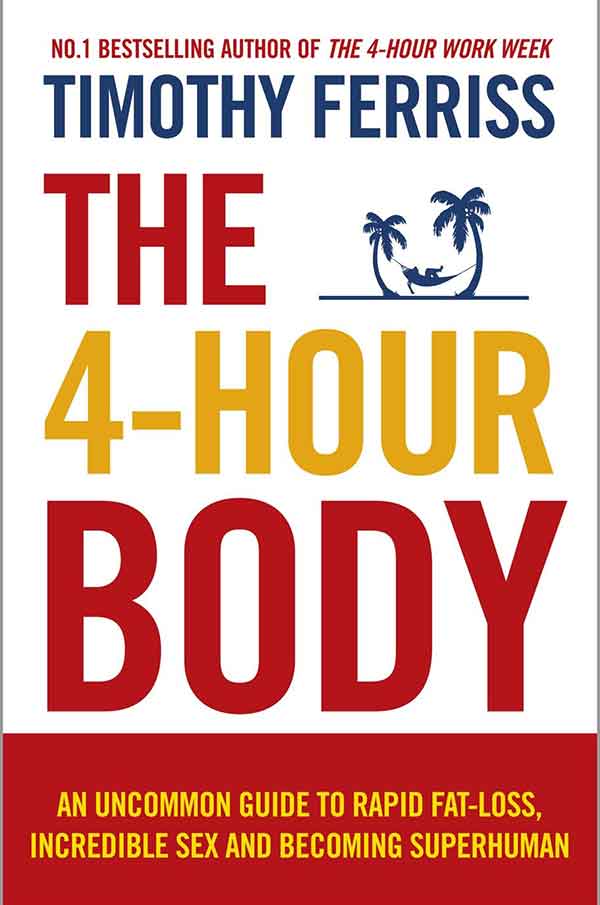The “4 Hour Body” is not merely a title; it symbolizes a radical transformation, a paradigm shift, if you will, in the approach to health, fitness, and personal optimization. Written by Timothy Ferriss, this book delves into the philosophy of minimalism applied to physical well-being. Within these pages, Ferriss invites readers to rethink traditional conceptions of diet, exercise, and the very essence of being fit. What makes this book truly intriguing is Ferriss’s penchant for experimentation and unconventional wisdom. This exploration is not just about getting fit; it’s about challenging your preconceptions and piquing your curiosity.
At the outset, Ferriss throws down the gauntlet by addressing the inefficiencies of conventional bodybuilding and dieting. He advocates for a results-oriented approach, where the emphasis is squarely on outcomes rather than mere effort. With an enthusiastic tone, he opens readers’ minds to the idea of achieving tremendous results through seemingly minimal effort. A glaring example of this principle is the “minimum effective dose” concept, which posits that just a small amount of effort can yield substantial results.
But how do we apply this to our daily lives? The book covers an astounding breadth of topics ranging from fat loss to muscle gain, enhancing sexuality to improving sleep efficiency. Ferriss’s promise isn’t just empty rhetoric; he supports his theories with personal anecdotes and extensive research. Herein lies an analytical approach to wellness that encourages the reader to adopt a curious mindset. The book is not merely prescriptive; it urges you to conduct your own experiments, to find what specifically works for you in the pursuit of health.
One of the most captivating sections revolves around the concept of *diet hacking*. Ferriss presents the “Slow Carb Diet,” a framework that minimizes carbohydrates while allowing for some flexible indulgence. This is where the curious reader may pause and ponder—what if everything I’ve ever learned about dieting was wrong? He masterfully outlines practical strategies, such as the idea that you should avoid anything white—rice, bread, pasta—but provides leeway for a “cheat day” each week. This audacious suggestion is exhilarating and liberating, redefining the boundaries of self-control and discipline.
The book’s structure facilitates an engaging journey through these intriguing topics. Ferriss employs a clear and systematic approach, making it easy for readers to digest complex concepts. Each chapter flows seamlessly into the next, gradually unveiling the layers of an intricate web that connects body, mind, and emotions. It is a text that demands not just passive reading but active participation—prompting you to jot down notes, reflect on your own habits, and scrutinize the efficacy of your routines.
Moreover, the exploration of physical fitness in the “4 Hour Body” is groundbreaking. Ferriss discusses various exercises but eschews the obsession with hours spent in the gym. Instead, he introduces readers to high-intensity workouts that promise results in a fraction of the time. The chapter on building muscle is particularly thought-provoking. Through an analytic lens, he deconstructs the myth that “more is better” when it comes to strength training, laying down a framework to build muscle efficiently and effectively. Suddenly, looking like a Greek god doesn’t seem like an Olympian feat but rather an attainable goal.
This ethos of efficiency extends to other realms, too. Enhance your sleep, improve your fertility, and turbocharge your sex life—all through strategic tweaks that challenge long-held beliefs. Ferriss’s examination of sexual health offers an especially provocative perspective. Treatment options and lifestyle changes that may have previously seemed absurd suddenly take center stage. This discourse encourages a re-evaluation of personal norms and opens avenues for growth and self-discovery.
At times, one can’t help but marvel at Ferriss’s audacity; he is nothing if not a provocateur. By inviting readers to shatter their preconceived notions, he also encourages a deeper exploration into the realm of self-experimentation—a core tenet of the book. No longer tethered to traditional methods, readers are inspired to make tactical assessments and adjustments tailored to their unique physiology and preferences.
The engaging narrative is peppered with Ferriss’s specific anecdotes—moments of victory juxtaposed with reluctance and failures that mark the journey of personal transformation. His honesty adds a layer of relatability, making it easier for readers to feel empowered rather than intimidated by the journey ahead. You’ll find snippets of humor and humanity that make the rich tapestry of technical jargon more digestible, grounding the bold theories in everyday reality.
As the pages wane, readers are left with an indelible sense of curiosity. The “4 Hour Body” acts as a springboard into a world where health is no longer a chore but an adventurous exploration. With its extensive content and keen insights, it compels you not just to read but to engage with your own body’s potential. It’s a call to action, prompting you to measure, track, and understand your body like never before.
Ultimately, this book is about taking charge of your life, developing a critical eye towards conventional wisdom, and redefining what’s possible. The curiosity that Ferriss ignites can lead to profound changes, empowering readers to mold their health strategies based on personal experiences rather than blindly adhering to antiquated doctrines. In reading the “4 Hour Body,” you’re not just absorbing information; you’re embarking on a journey of self-discovery and transformation—a quest well worth pursuing.
